Xylophanes maculator maculator
|
|
Updated as per personal communication with Ben Trott (Playa del Carmen, Quintana Roo, Mexico); March 2, 2012
|
Xylophanes maculator maculator
Boisduval, [1875]
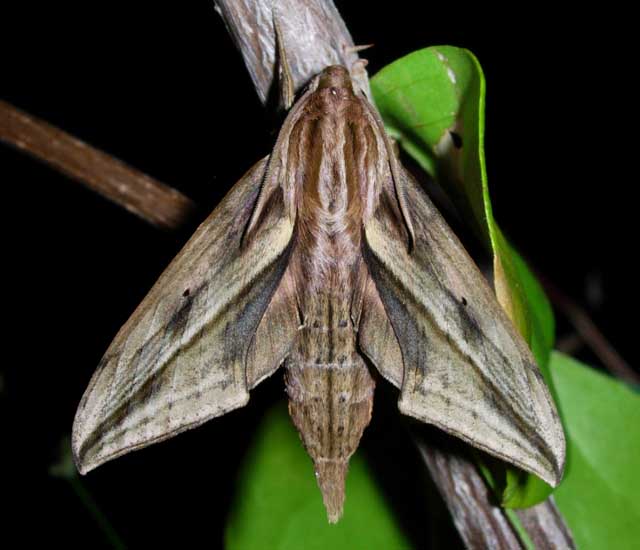
Xylophanes maculator male, Playa del Carmen,
Quintana Roo, Mexico,
courtesy of Ben Trott.
This site has been created by
Bill Oehlke at oehlkew@islandtelecom.com
Comments, suggestions and/or additional information are welcomed by Bill.
TAXONOMY:
Family: Sphingidae, Latreille, 1802
Subfamily: Macroglossinae, Harris, 1839
Tribe: Macroglossini, Harris, 1839
Genus: Xylophanes Hubner [1819] ...........
Species: maculator maculator Boisduval, [1875]
|
MIDI MUSIC
.....It's a Wonderful World.....
copyright C. Odenkirk
ON.OFF
<bgsound src="world.mid" LOOP=FOREVER>
|
DISTRIBUTION:
Xylophanes maculator maculator
(wingspan: 65-75mm, males generally smaller than females)
moths fly in
Venezuela (specimen type locality), and generally from
Mexico: Quintana Roo (BT) and elsewhere; and Belize to Ecuador
and further south to ?? Bolivia.
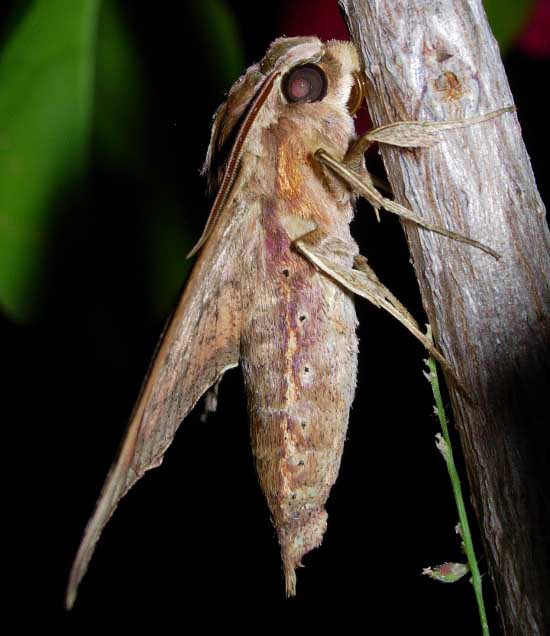
Xylophanes maculator male, Playa del Carmen,
Quintana Roo, Mexico,
courtesy of Ben Trott.
FLIGHT TIMES:
Xylophanes maculator maculator
adults fly in April, June-July-August-September, November-December in
Costa Rica and probably have an even more extended season.
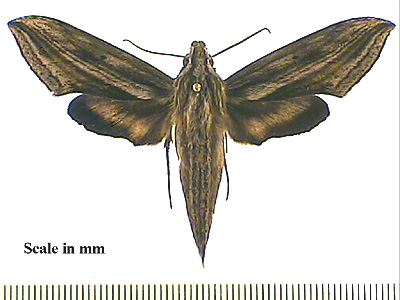
Xylophanes maculator
maculator courtesy of Matthew Barnes.
ECLOSION:
Pupae probably wiggle to surface from subterranean chambers just prior to eclosion.
SCENTING AND MATING:Females call in the males with a pheromone released from a gland at the tip of the
abdomen. Males come in to lights very readily, but females are
seldom taken in that way.
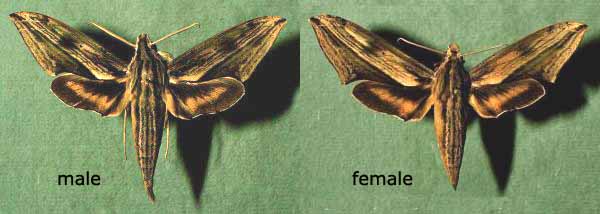
Xylophanes maculator maculator courtesy of Dan Janzen.
EGGS, LARVAE, PUPAE:
Larvae probably feed on
plants of the Rubiaceae (Psychotria nervosa,
Psychotria horizontalis)
and Malvaceae and Fabaceae (Inga vera)
and Dilleniaceae ( Tetracera volubilis) families.
Green and brown larval forms seem to chose appropriate hiding/roosting
places to best blend in with surroundings.
Xylophanes maculator maculator larvae have a gray black last
instar instead of the brown of Xylophanes anubus. Maculator
eyes are black with a blue-white dot so that they look crossed;
there is a dull yellow eye ring.
The tail is black with swelling at base. Fine yellow dots are
wide-spaced on body.
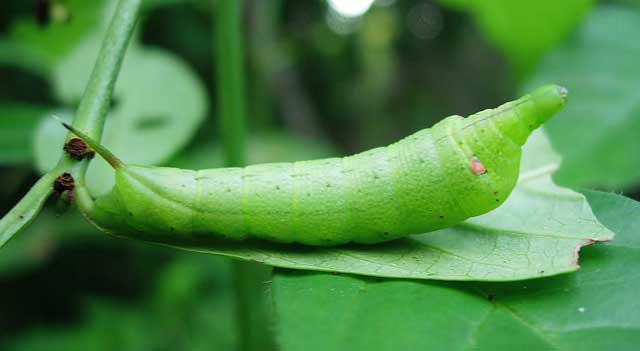
Xylophanes maculator third instar on Psychotria horizontalis,
Playa del Carmen, Quintana Roo, Mexico, courtesy of Ben Trott.
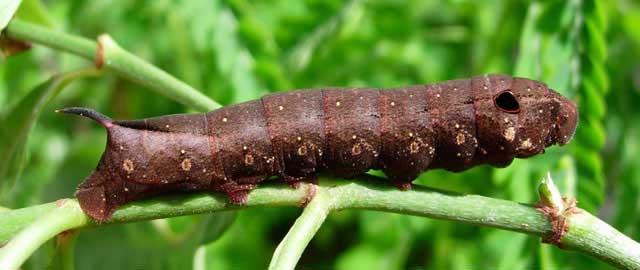
Xylophanes maculator fifth instar on Psychotria horizontalis,
Playa del Carmen, Quintana Roo, Mexico, courtesy of Ben Trott.

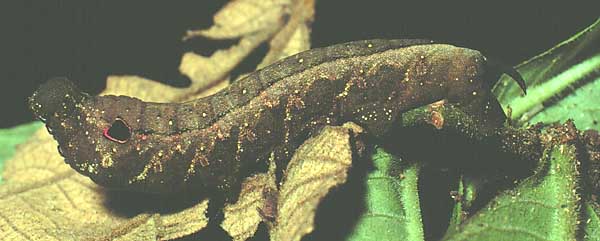
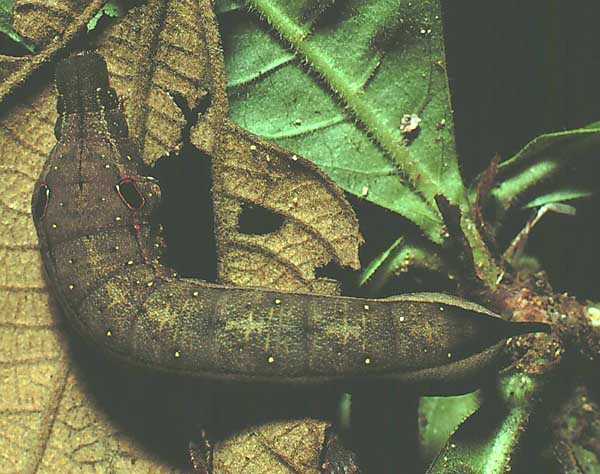
Xylophanes maculator maculator courtesy of Dan Janzen.
Moths emerge approximately three weeks after larvae pupate.
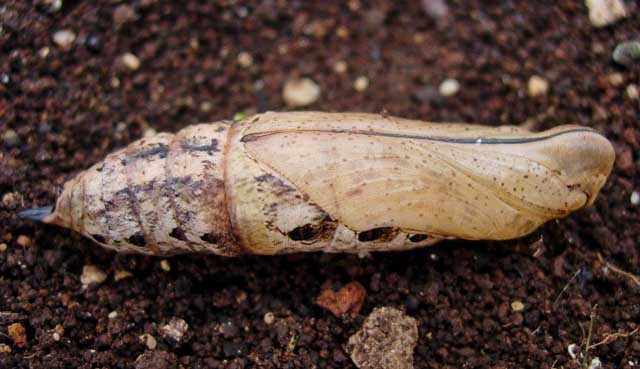
Xylophanes maculator male pupa, Playa del Carmen, Quintana Roo, Mexico,
courtesy of Ben Trott.
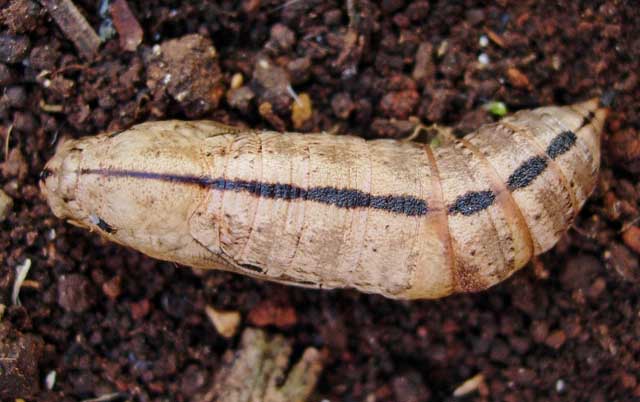
Xylophanes maculator male pupa, Playa del Carmen, Quintana Roo, Mexico,
courtesy of Ben Trott.
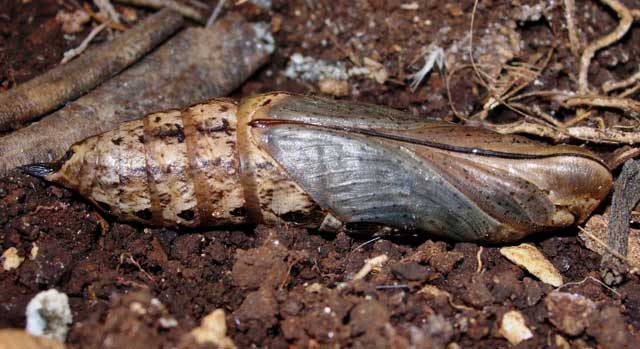
Xylophanes maculator male pupa, Playa del Carmen, Quintana Roo, Mexico,
courtesy of Ben Trott.
Use your browser "Back" button to return to the previous page.
Goto Main Sphingidae Index
Goto Macroglossini Tribe
Goto Central American Indices
Goto Carribean Islands
Goto South American Indices
Goto U.S.A. tables











